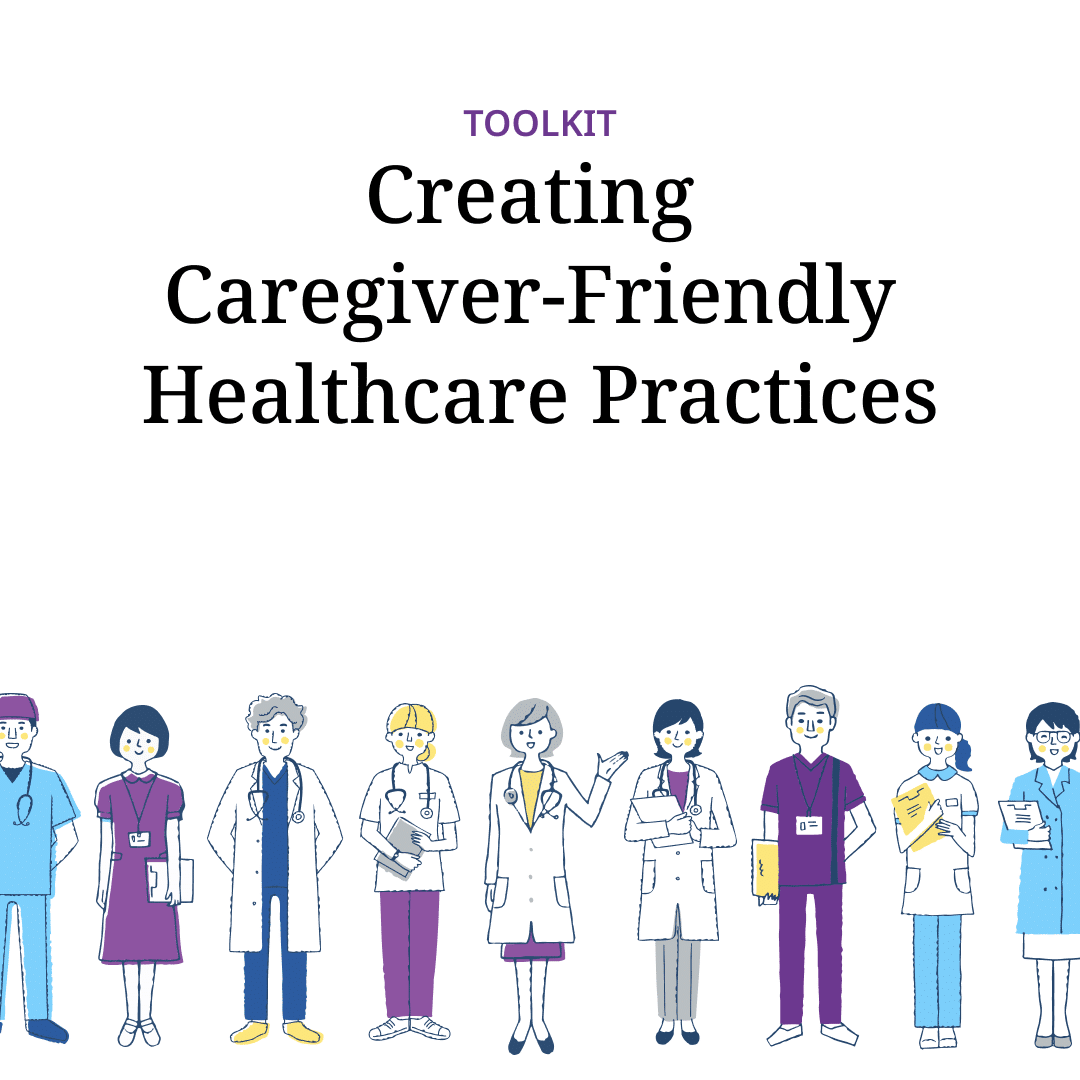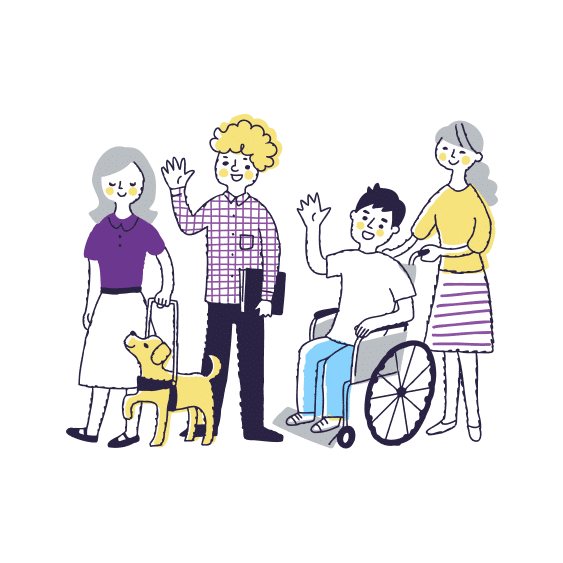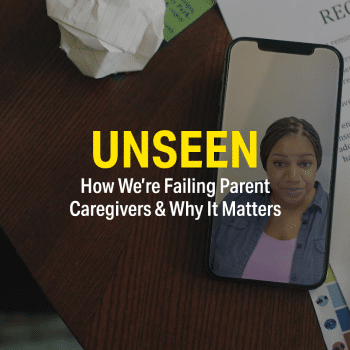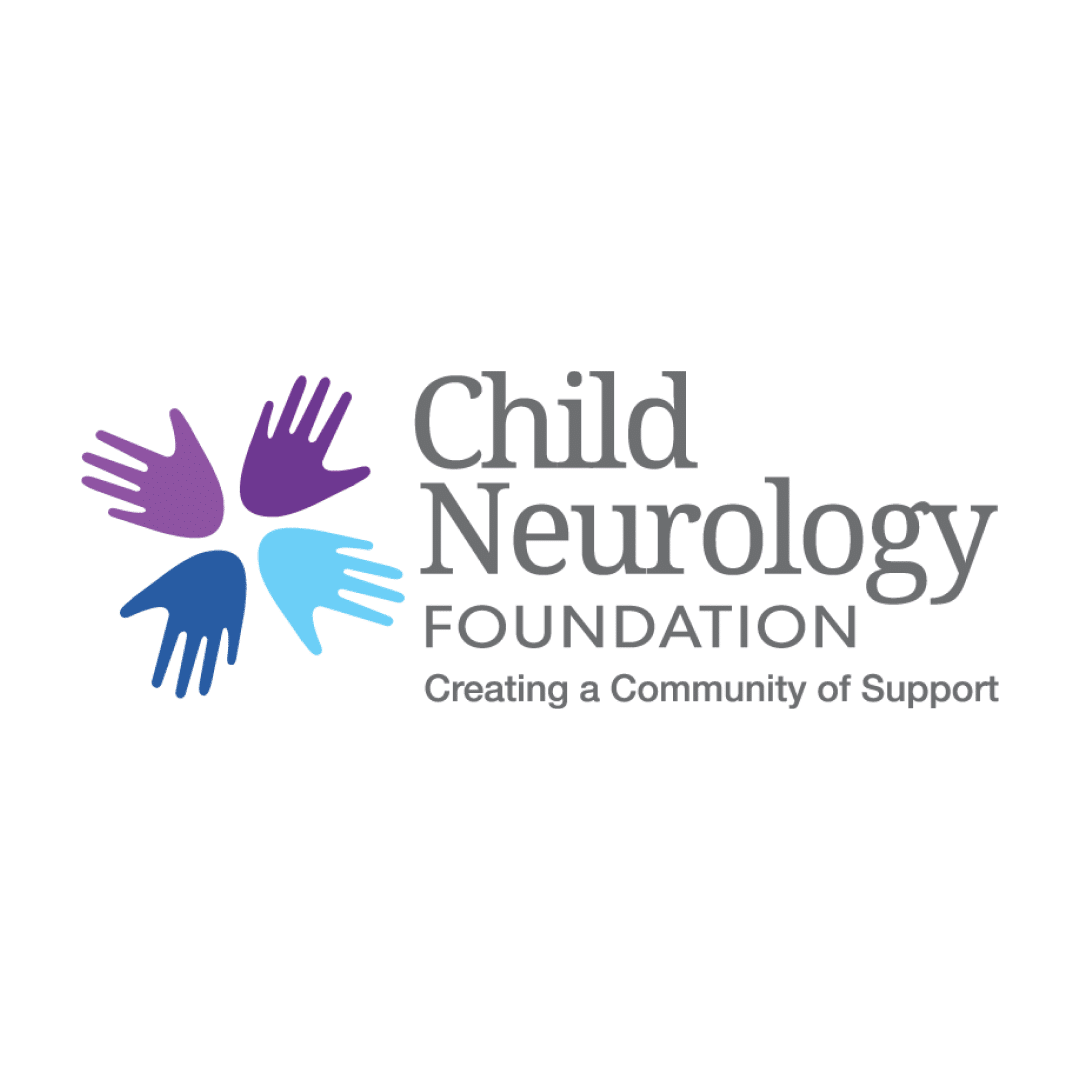
Explore the Caregiver-Friendly Healthcare Practices Toolkit
Learn how healthcare providers can improve outcomes by recognizing and equipping caregivers.
Caregiver-Friendly Healthcare Practices Toolkit
Created in partnership with

Healthcare is a caring profession. Clinicians want the best possible outcomes for their clients. They go to school for a very long time to learn the necessary skills to make it happen. Part of being a provider is delivering care that is not only effective, but sensitive to a person’s unique needs. Yet clients with disability are often subject to prejudice and discrimination, and their caregivers face judgement and misunderstanding. Read on for tips on how to provide culturally competent care to clients with disability and their caregivers.
Implicit bias is common in the healthcare setting. A recent study suggests that many healthcare providers exhibit subtle, largely unconscious, prejudice against people with disabilities.
To be human is to be biased, and it’s important for all of us to take a good look at ourselves, especially when working in a professional care capacity. In order to communicate effectively with your clients and their caregivers, you’ve got to be open and receptive to what they might say. Start by looking inward. Is there any implicit bias or prejudice within that might act as a barrier to communication and treatment?
Here are a few questions to ask yourself:
Caregivers are doing the best they can with what they have. Resources can be difficult to come by, and many families get stuck in survival mode. It’s great to have big goals and dreams for your clients, but it’s important to remember that barriers exist when it comes to meeting them.
Caregivers work tirelessly to ensure that things flow smoothly at home. It may be incredibly difficult and disruptive to the entire family if they are asked to implement a special new diet or begin a time-intensive treatment. Even small tweaks to the status quo can have far-reaching consequences. Anticipate that for many families, change is a process.
Helping caregivers identify their barriers and come up with creative work-arounds, or moving the goalpost altogether, can go a long way in helping clients and their families progress. Remember, small steps can have a big impact, too.
Healthcare providers only want the best for their clients. Sometimes this means setting high expectations. But often, reality gets in the way. What is expected and what is achievable don’t always meet. When that happens it’s important to approach caregivers and their dependents with grace, acceptance, and a willingness to find a different solution.
Most importantly, don’t judge. The provider-client-caregiver relationship is an important partnership, and it won’t succeed without trust. Caregivers and their dependents have to know that if they can’t meet that goal today, you aren’t going to judge them for it.
The identified patient and the caregivers are all important members of the care team and their opinions and input matter. Providers should consult with both the client and caregiver as part of every appointment.
The best way to check in with caregivers is to ask. It can be as simple as “How are you doing? How are things at home?” Caregivers are often overlooked or forgotten, and they might be surprised at first to hear the question. But if you are engaged and open to hear what they have to say, you’ll find that caregivers have a lot to tell you. For more on this, check out our article on caregiver communication best practices.
Clinicians should do their best to avoid using harmful stereotypes in client care. Just because a person can’t speak, doesn’t mean they can’t communicate or understand. An intellectual disability does not mean a person does not have preferences and a role in their own health. Also, not all disabilities are visible to the eyes. Remember, people with disabilities are capable of independence, and it’s important to avoid making assumptions about what they can or can’t do.
For clients and caregivers specifically, making comparisons to other people can be very hurtful. Nobody likes to be reminded of where they rate when compared to “normal.” It is especially disheartening to be reminded that a person may never meet an arbitrary benchmark. Avoid comparing your clients to what is “typical,” or even to other people with disabilities. Every person lives their own, individual journey.
Every clients deserves adequate accessibility accommodations. Whether that’s ensuring elevators are working or bathrooms have adult-size changing tables, families impacted by disability should know their needs are a priority.
Here are ways you can get started:

Learn how healthcare providers can improve outcomes by recognizing and equipping caregivers.

The “Unseen” documentary gives an unfiltered, honest glimpse into the lives of caregivers and their families.

The Child Neurology Foundation connects partners from all areas of the child neurology community so those navigating the journey of disease diagnosis, management, and care have the ongoing support from those dedicated to treatments and cures.

Sign up to get notified about upcoming screenings, new bonus content releases, and get a 10% off coupon for our mech store!